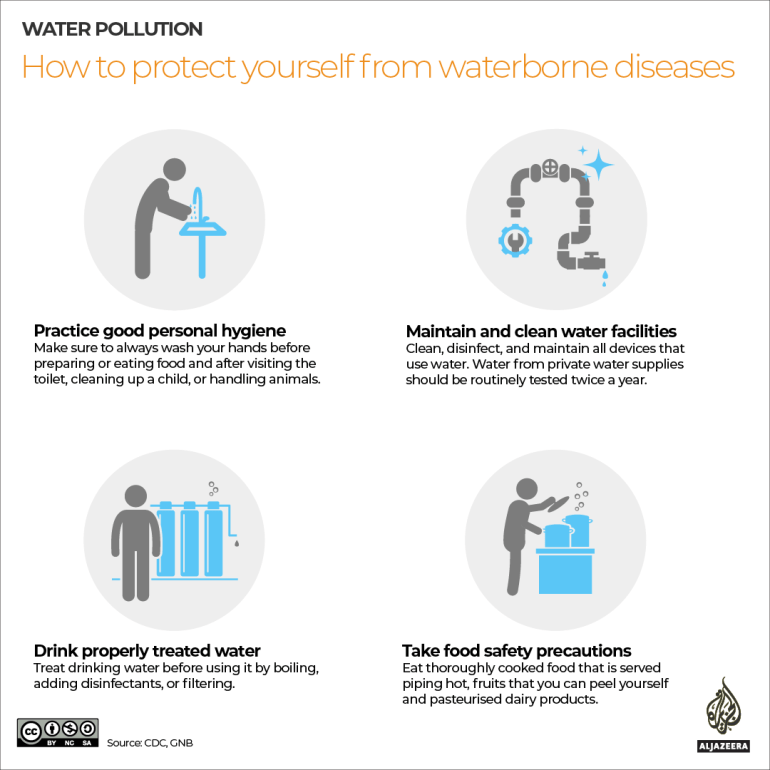Infographic: Which countries have the safest drinking water?
One in four people does not have access to safe water. In low-income countries, unsafe water accounts for six out of every 100 deaths.
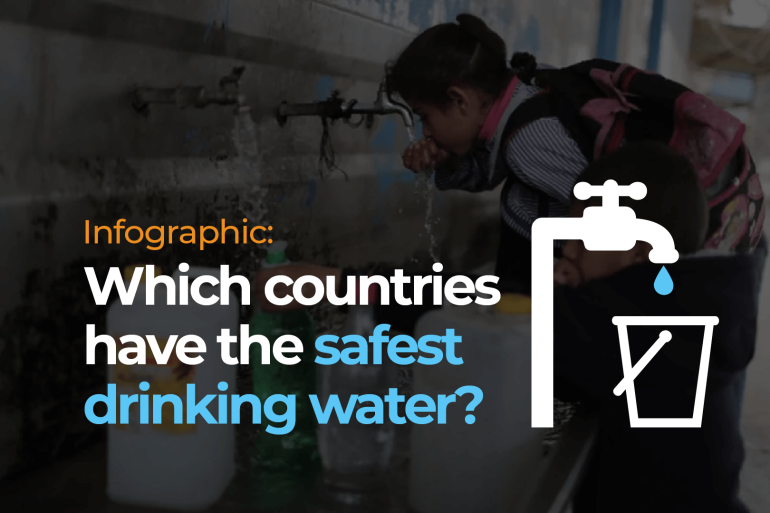
People across the globe observe March 22 as World Water Day – designated by the United Nations to raise awareness of the two billion people living without access to safe water. The theme this year is “Groundwater: making the invisible visible”.
Groundwater is the water found below the Earth’s surface and is the largest source of fresh water on earth.
Keep reading
list of 4 itemsIraq’s climate conundrum: Oil reliance versus vanishing water
‘It was a celebration’: Top court frees Honduras water defenders
‘Not a dumping ground’: Pacific condemns Fukushima water plan
Safe and readily available water is important for public health. Polluted water is linked to the transmission of many diseases including cholera, diarrhoea, dysentery, hepatitis A, typhoid and polio.
According to the World Health Organization (WHO), diarrhoeal diseases resulted in the deaths of some 1.5 million people in 2019, making this the eighth-highest cause of death globally, particularly among lower-income groups.
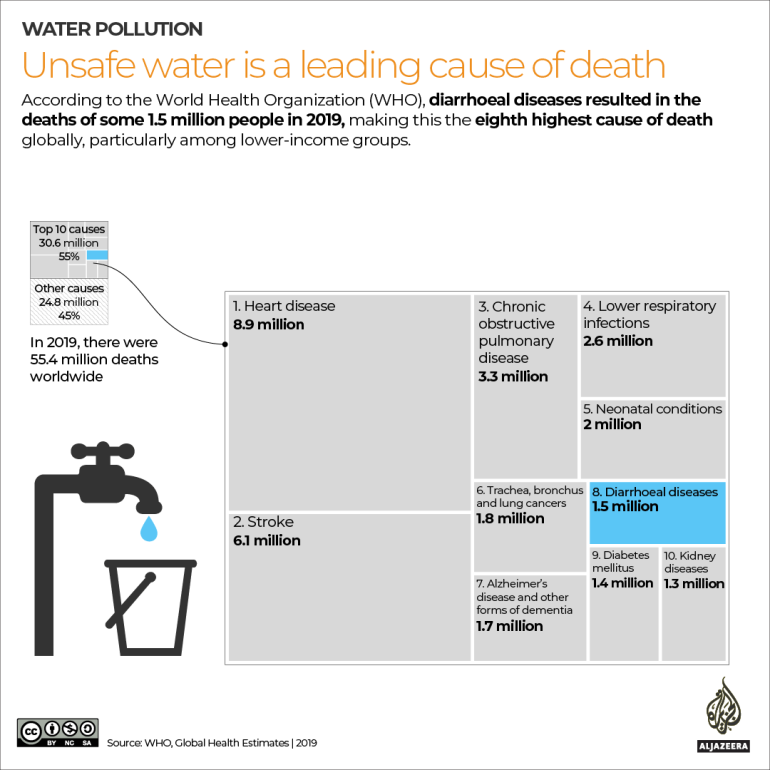
Higher death rates in low-income countries
Globally, at least two billion people use a drinking water source contaminated with faeces.
In 2019, the share of annual deaths attributed to unsafe water across the world ranged from a high of 10.1 percent in Chad – about 100 in 1,000 – to about 0.3 percent on average in the Americas to less than 0.02 percent across most of Europe, according to the Global Burden of Disease Collaborative Network.
In low-income countries, unsafe water sources account for the deaths of six out of every 100 people.
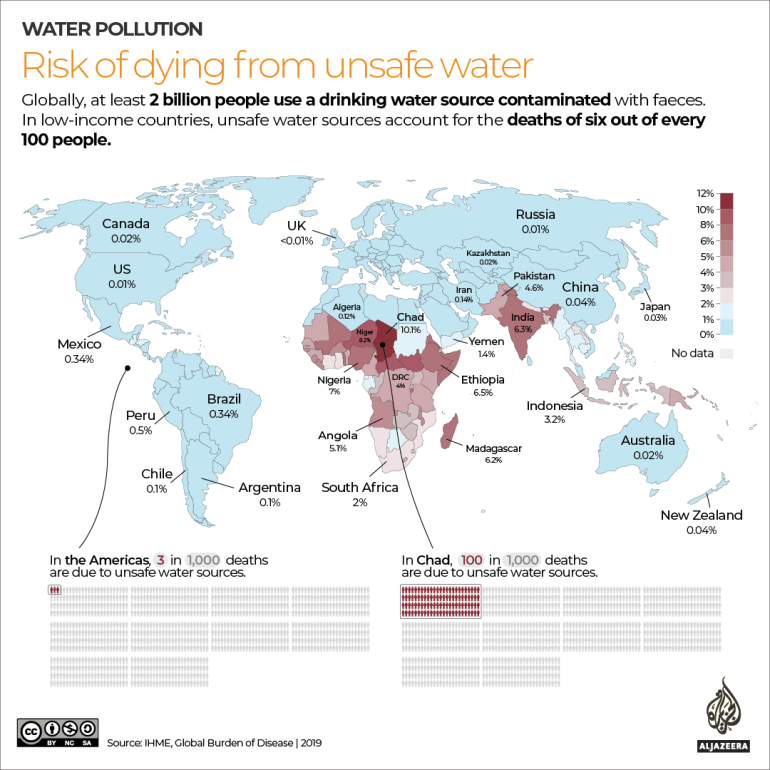
Which countries have the safest drinking water?
In 2020, about three-quarters (74 percent) of the world’s population had access to clean drinking water. One in four people does not have access to a safely managed water source.
In the least-developed countries, 22 percent of healthcare facilities have no water service, 21 percent have no sanitation service, and 22 percent have no waste management service. Most are in sub-Saharan Africa.
Ten countries – eight in Africa and two in Asia – have less than a 20 percent share of the population with access to safely managed drinking water. The lowest in share percentages are Chad (5.6 percent), the Central African Republic (6.2 percent), Sierra Leone (10.6 percent), Rwanda (12.1 percent) and Ethiopia (12.6 percent).
The countries with 100 percent access to safe drinking water include Greece, Iceland, Kuwait, Lichtenstein, Malta, Monaco, New Zealand, San Marino and Singapore.
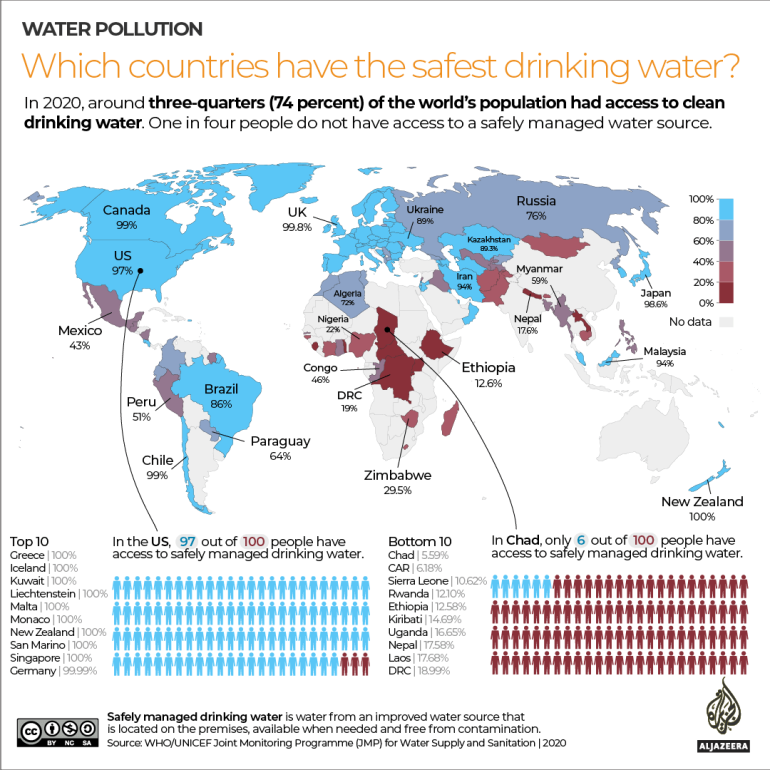
How to protect yourself from waterborne diseases
Some main precautions that can be taken to protect yourself and your family from waterborne diseases are recommended by the United States Centers for Disease Control and Prevention (CDC), including:
- Practice good personal hygiene. Make sure to always wash your hands before preparing or eating food and after visiting the toilet, cleaning a child, or handling animals.
- Maintain and clean water facilities. Clean, disinfect, and maintain all devices that use water. Water from private water supplies should be routinely tested twice a year.
- Drink properly treated water. Treat drinking water before using it by boiling, adding disinfectants, or filtering.
- Take food safety precautions. Eat thoroughly cooked food that is served piping hot, fruits that you can peel yourself and pasteurised dairy products.
